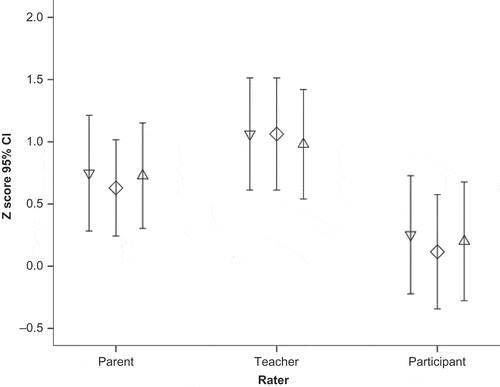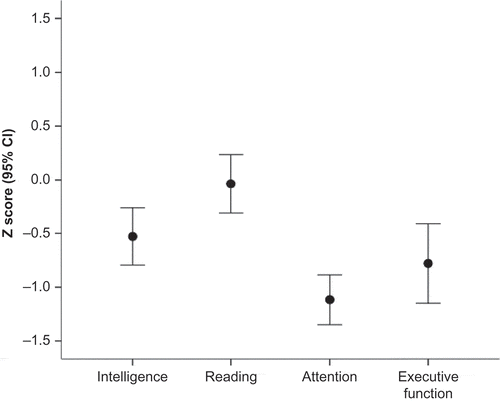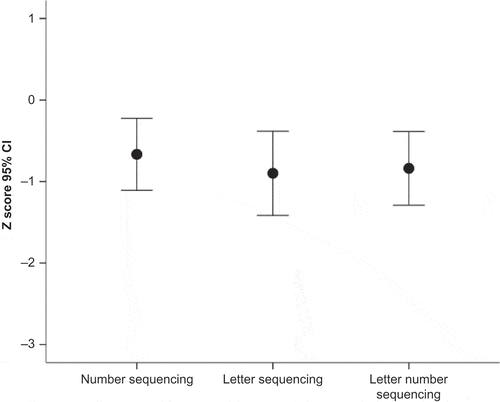Figures & data
Table 1 Demographics and Clinical Characteristics of the Sample
Table 2 Clinical Characteristics of Participants
Table 3 Neuropsychological Measures for Clinical Sample Compared to Normative Means
Table 4 Psychological and Behavioral Measures for Clinical Sample Compared to Normative Means
Figure 4 BRIEF scores across domains and raters, where higher scores denote more difficulties. Inverted triangles = Behavioral Regulation Index (BRI); Diamonds = Metacognition Index (MI); Triangles = Global Executive Composite (GEC).

Table 5 Correlation Between Neuropsychological and Questionnaire Data
Table 6 Neuropsychological, Psychological, and Behavioral Measures for Clinical Sample at T1-T2



